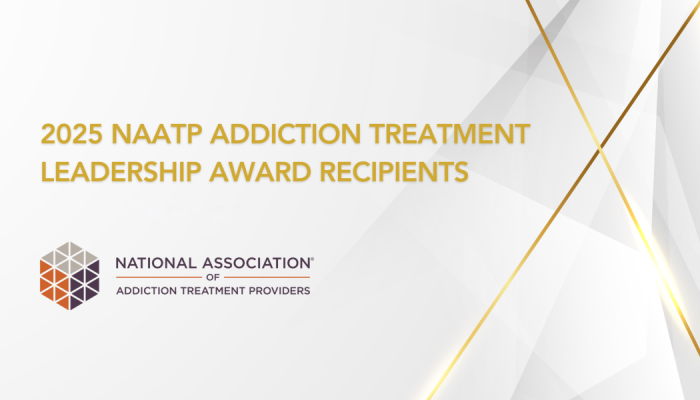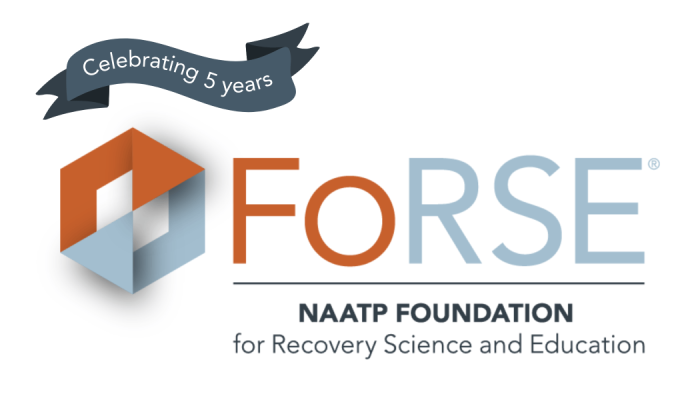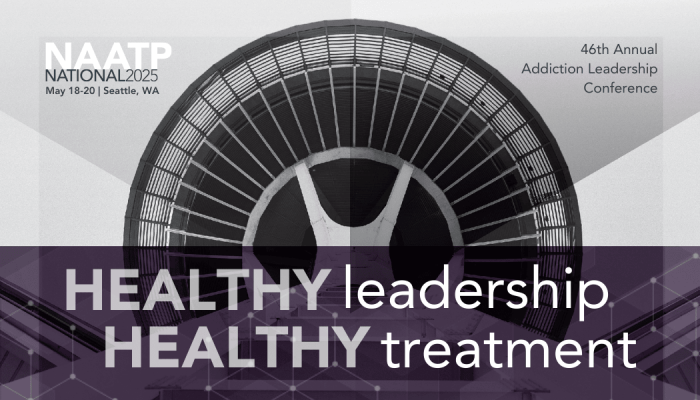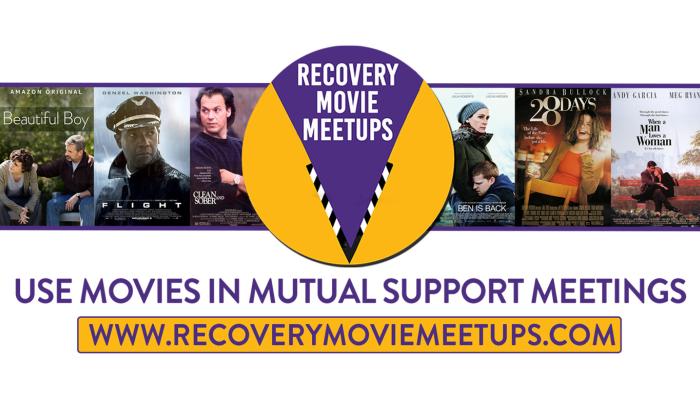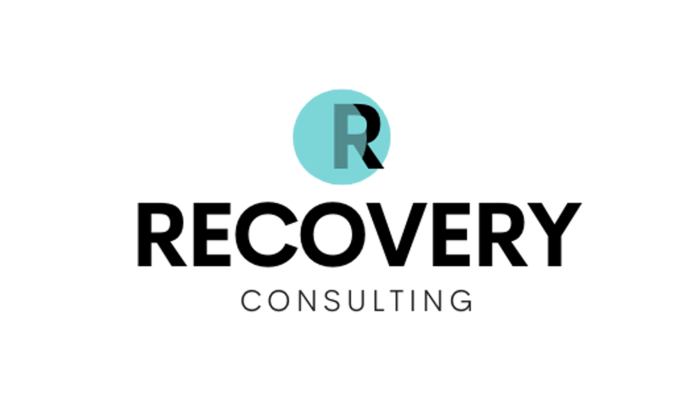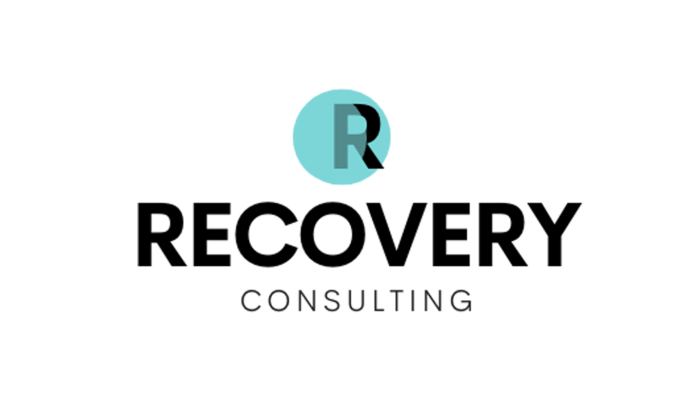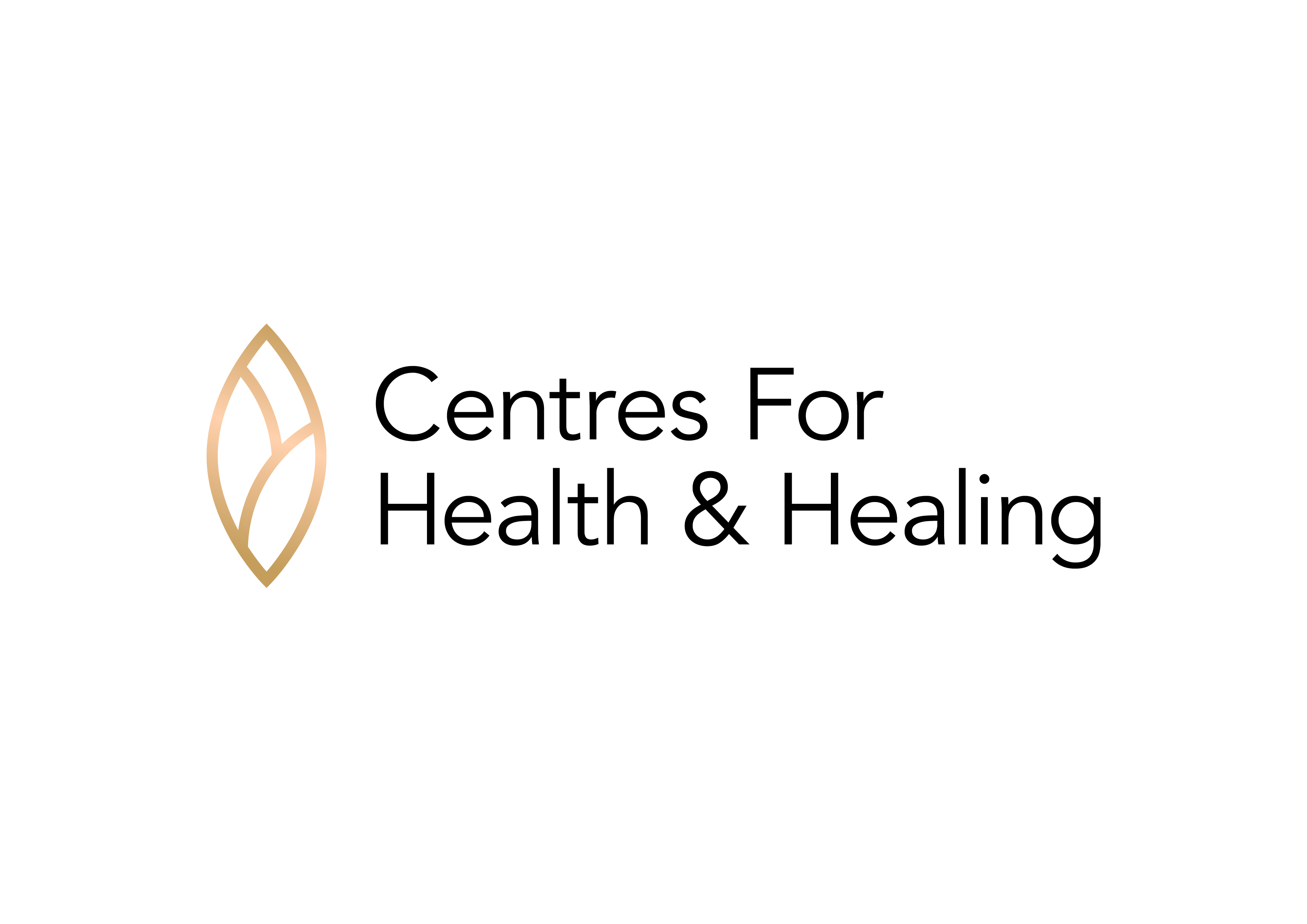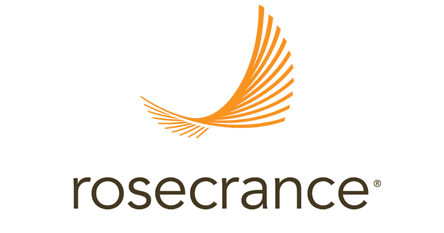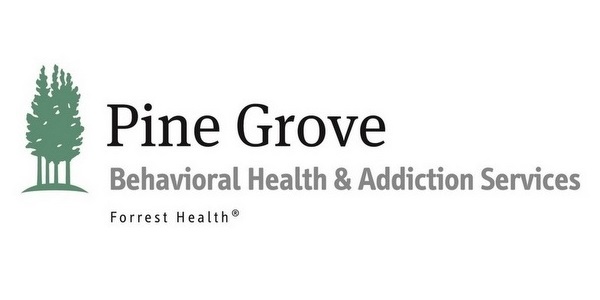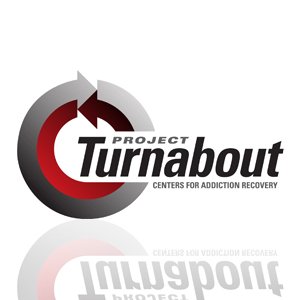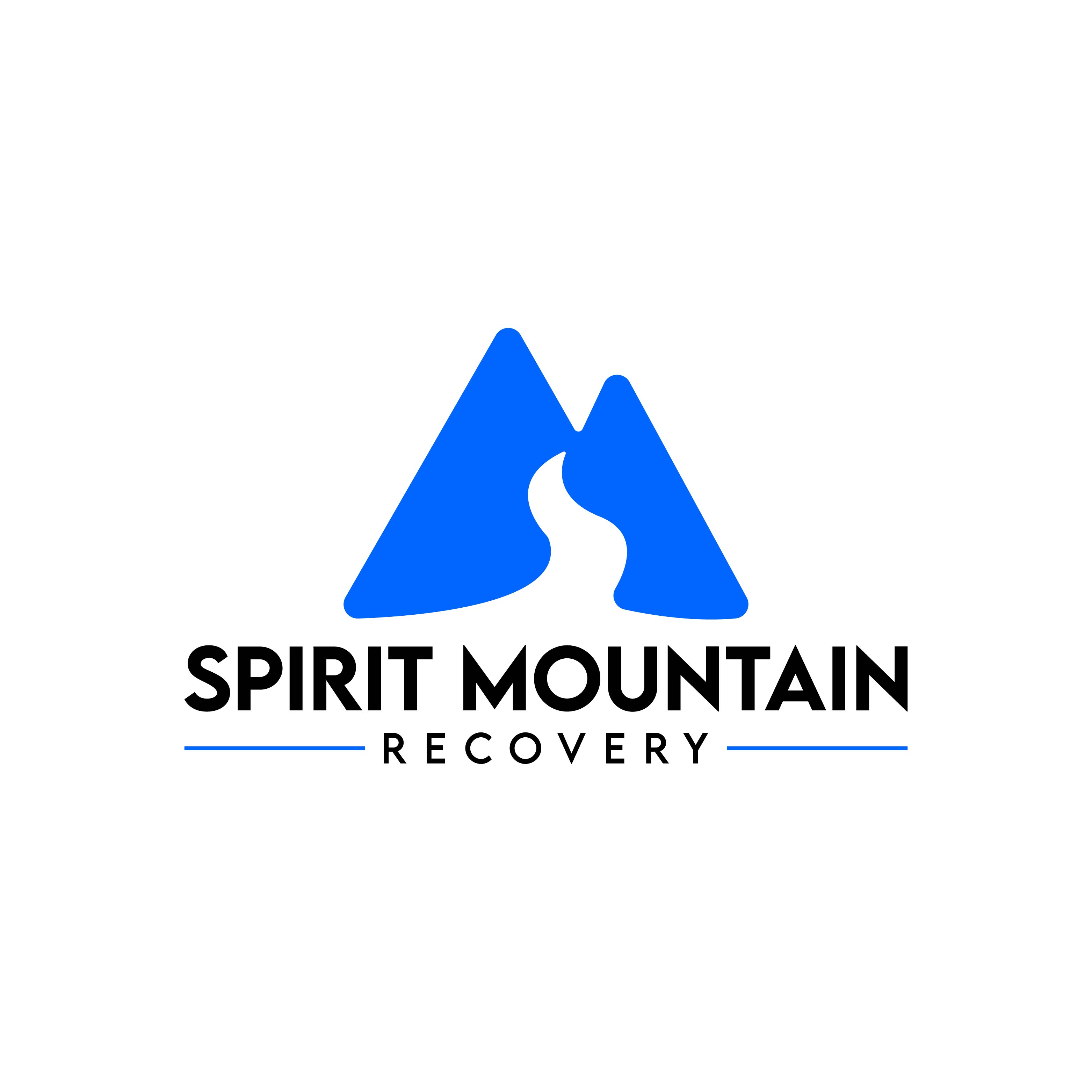Mar 9, 2021
The top section of the Google search results page was replaced by a large banner showing a SAMHSA (Substance Abuse & Mental Health Services Administration) addiction hotline number in June of 2020. SAMHSA is a government agency whose website contains addiction and mental health resources. This change was originally implemented in certain states and has subsequently become the default search setting nationwide. The majority of addiction-related terms now trigger this banner to show above the fold, before paid ads and organic listings.
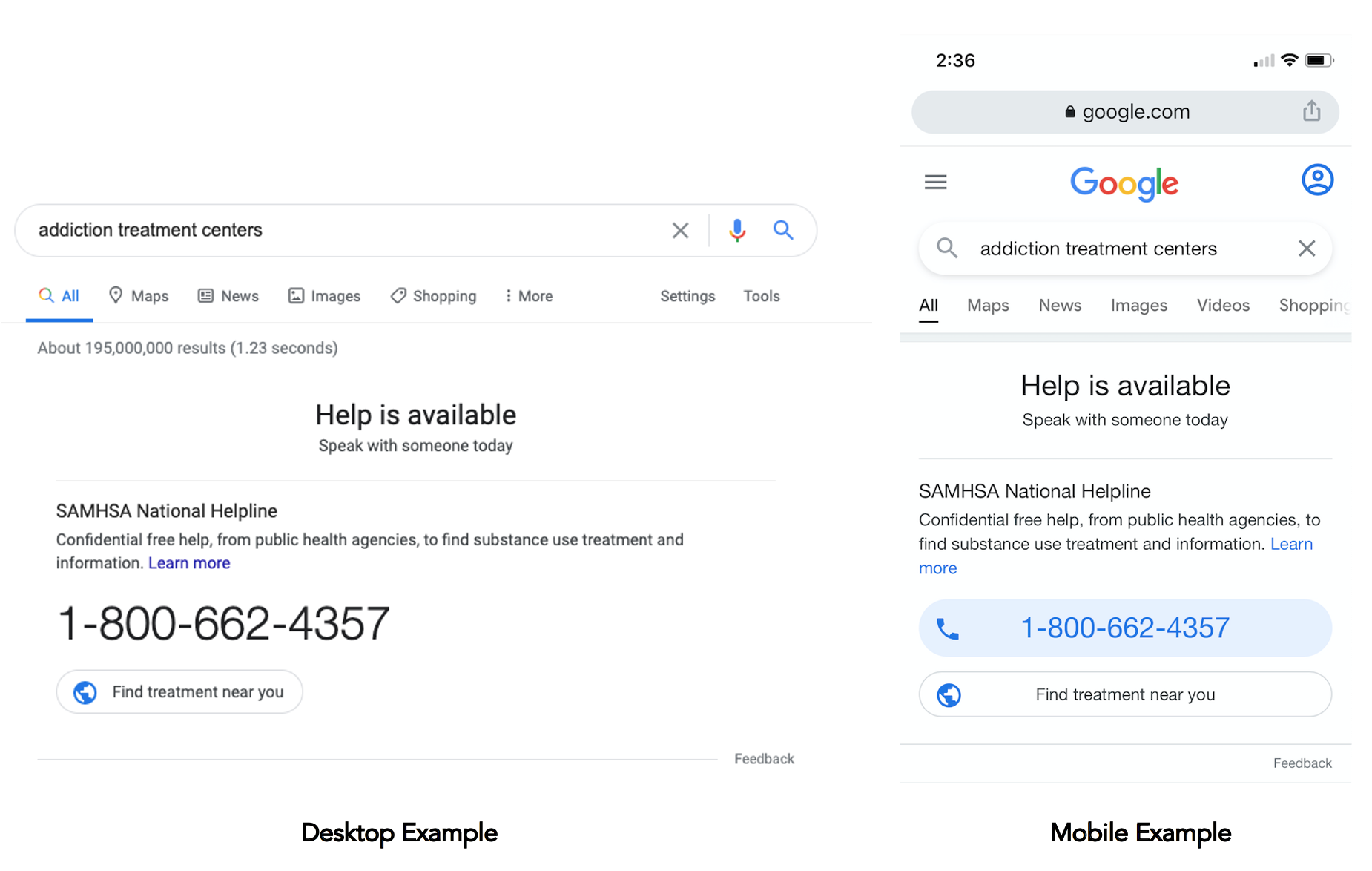
Google’s Hotline Boxes
The top section prominently displaying the SAMHSA phone number is referred to as a hotline box: a part of Google’s knowledge panel. A Google source confirmed that they will continue applying hotline boxes to addiction-related terms. Google does this for important searches that suggest a crisis or emergency requiring immediate help, like human trafficking and suicide.
Since the SAMHSA number generally occupies the top, Google Ads have been moved either beneath the hotline banner or to the bottom of the page. This positioning matters. Usually, the top result receives the most clicks, while other listings receive less traffic.
With this positioning, Google’s endorsement of the hotline and SAMHSA’s credibility as a government behavioral health directory, their advantage and influence become massive. It is safe to assume that a high portion of leads will be calling this number.
The Impact on the Treatment Industry
Taking away the top of the search results page impacts centers that are competing fairly for addiction treatment terms by diminishing the value and purpose of LegitScript certification.
By 2018, online addiction marketing became so unethical that Google banned addiction-related ads until a strict verification procedure could be implemented. Today, that process is known as LegitScript certification.
Treatment centers now pay thousands of dollars and dedicate dozens of hours to achieving LegitScript certification to run Google Ad campaigns. The goal is to have their ads show at the top of the search results to drive leads to their certified treatment center. Removing that real estate to accommodate the SAMHSA banner diminishes the value of Google Ads and the value of certification.
Diminishing the value of LegitScript isn’t in the best interest of the treatment industry or those seeking help. The process of certification ensures that a center is licensed, ethical and provides quality treatment. The requirements for a listing on SAMHSA are far less stringent, creating serious implications for those searching for help.
The Impact on People Seeking Treatment
What exactly happens when SAMHSA’s hotline number is dialed? We tested it and received a list of the five treatment centers closest to our location, which is their standard practice. Here are a few reasons why this is not optimal.
A Local Center Isn’t Always Preferred
Local help isn’t always the best option. There are times where an individual needs to get out of a toxic, triggering or unsafe environment to have the best chance at recovery. Likewise, a person may need specialized mental health or other services that aren’t offered at the 5 closest centers.
Irrelevant, Generalized Recommendations Lead to a Poor Fit
Neither the hotline number nor the centers SAMHSA recommend will vary based on what type of treatment a user is searching for such as specific levels of care and clinical services. Any addiction search will trigger the same result, regardless of what the search intent was or what may be clinically appropriate for that person. “Addiction treatment for Veterans” gives you the same options as “teen addiction treatment centers.”
Fraudulent, Unaccredited Results
There are also several non-certified centers on SAMHSA. In our first search, the third treatment center listed on SAMHSA had a questionable facility name, which we suspected was a lead generation company. This listing didn’t have a website, so we Googled the address, revealing a different treatment center’s website whose name didn’t match the one in the directory. Upon further research, we found that the original center’s name was changed because the owners were arrested for patient brokering 18 months ago. Patient brokering is akin to human trafficking, meaning that the Google hotline seeking to help those in crisis can actually cause unintended harm.
Protecting the most vulnerable from unscrupulous players is precisely what the industry has worked so hard to achieve. If we’re putting addiction in the same category as suicide and human trafficking, we need to hold it to the same standard of delicacy and scrutiny. If an individual considering taking their own life or a victim of human trafficking called a hotline with unsafe resources, it would be unacceptable. The same is true for those seeking addiction treatment
The Impact on User Experience
Although the intentions of the SAMHSA hotline are good, an array of issues have affected user experience from both a search and addiction treatment perspective.
Placing so much emphasis on a single directory that provides a global answer takes the power of choice away from the user. This conflicts with Google’s goal of providing a better user experience with search. A global answer is less relevant and informative than a specific answer. Additionally, if a user is guided to treatment centers that are the wrong fit initially, those centers may fail to direct them to a more appropriate program. A recent NPR study found that 1/3 of treatment centers they called offered a spot in their program before a clinical assessment took place.
The SAMHSA treatment locator has also experienced issues lately, and it’s down even as we were writing this:
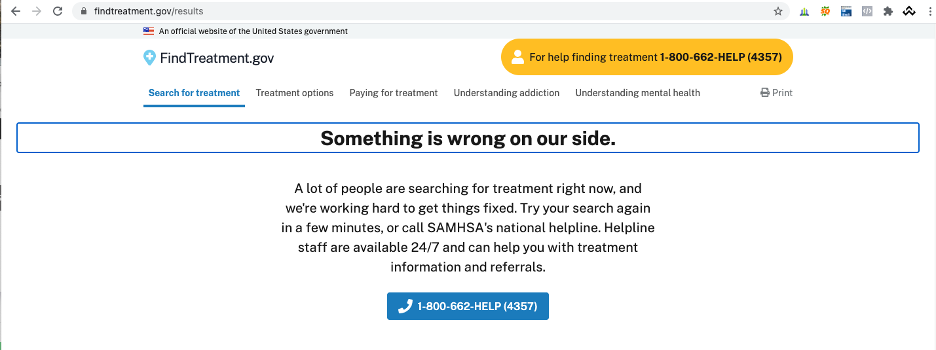
This isn’t to discredit the intent and hard work at SAMHSA – after all, no reasonable person would expect it to handle the search volume created by Google. However, because the directory is down, it forces users to call a hotline that can have long wait times, conflicting with the idea that we need a hotline box because the user is in crisis and needs help immediately. In all likelihood, it would have been faster to have searched and called a treatment center that fits their needs directly.
Lastly, SAMHSA doesn’t need to and shouldn’t be expected to handle the volume of addiction-related inquiries Google generates. The users who call SAMHSA are going to come away with one piece of information: the names of five treatment centers close to them. A list that can already be found in Google’s local maps section.
Conclusion
The intent behind the decision to add the SAMHSA box is noble as its aim was to help people in need. Intent and efficacy don’t always align. Google doesn’t have a deep understanding of all of the nuances of addiction treatment, and they shouldn’t be expected to. It’s up to those in the addiction treatment industry to provide Google with feedback and information to guide them in the direction that is most helpful for those that need treatment. We suggest that the SAMHSA box is reverted back to its natural organic placement and we have communicated this to Google. If you’d like to help influence the placement of the SAMHSA directory, you can provide feedback by clicking the link in the bottom right of the banner:
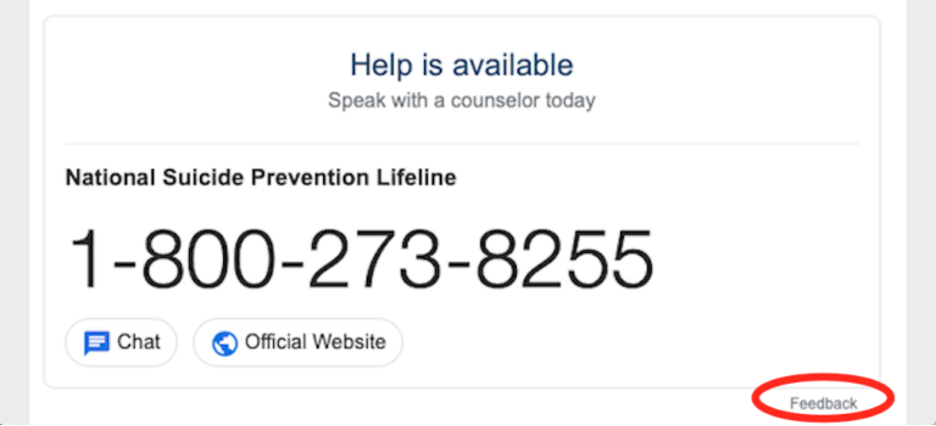
With enough feedback, this would ideally open a healthy dialogue between the treatment industry and Google with the goal of providing better resources and care for vulnerable people.
Author:
John McGhee
Managing Partner
Webconsuls


